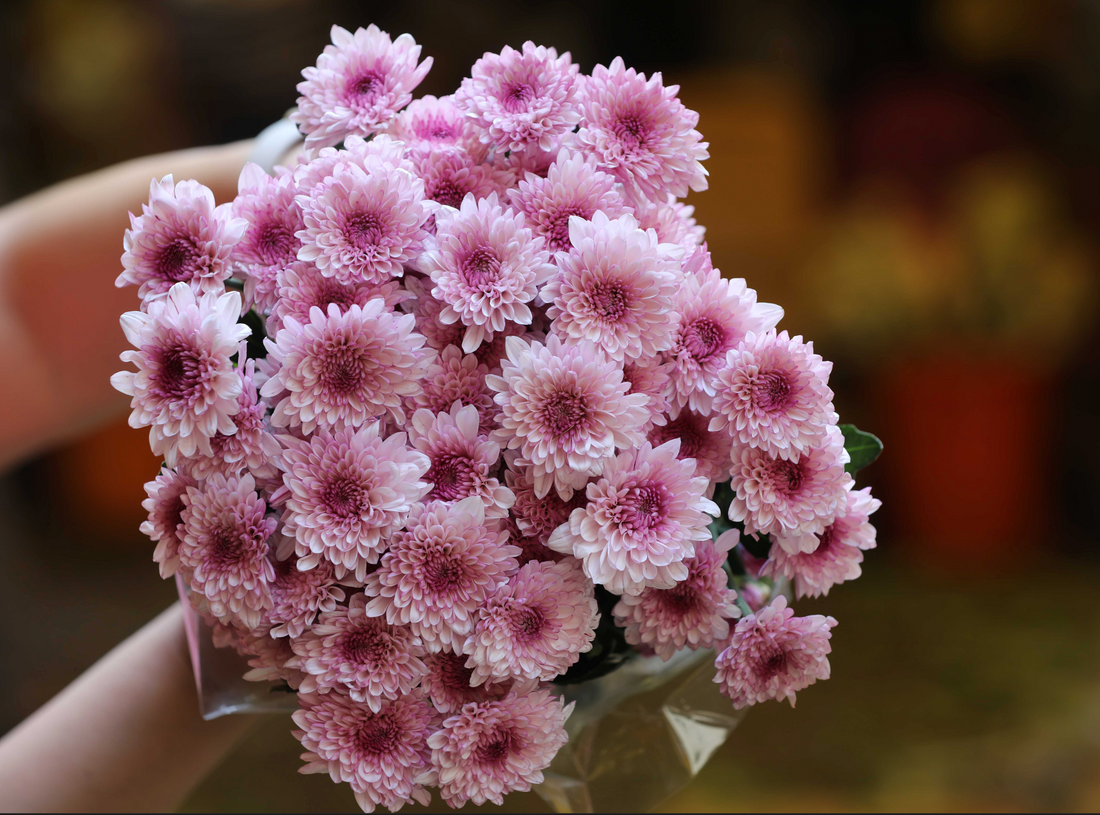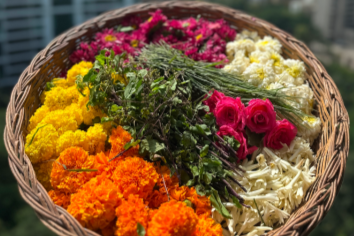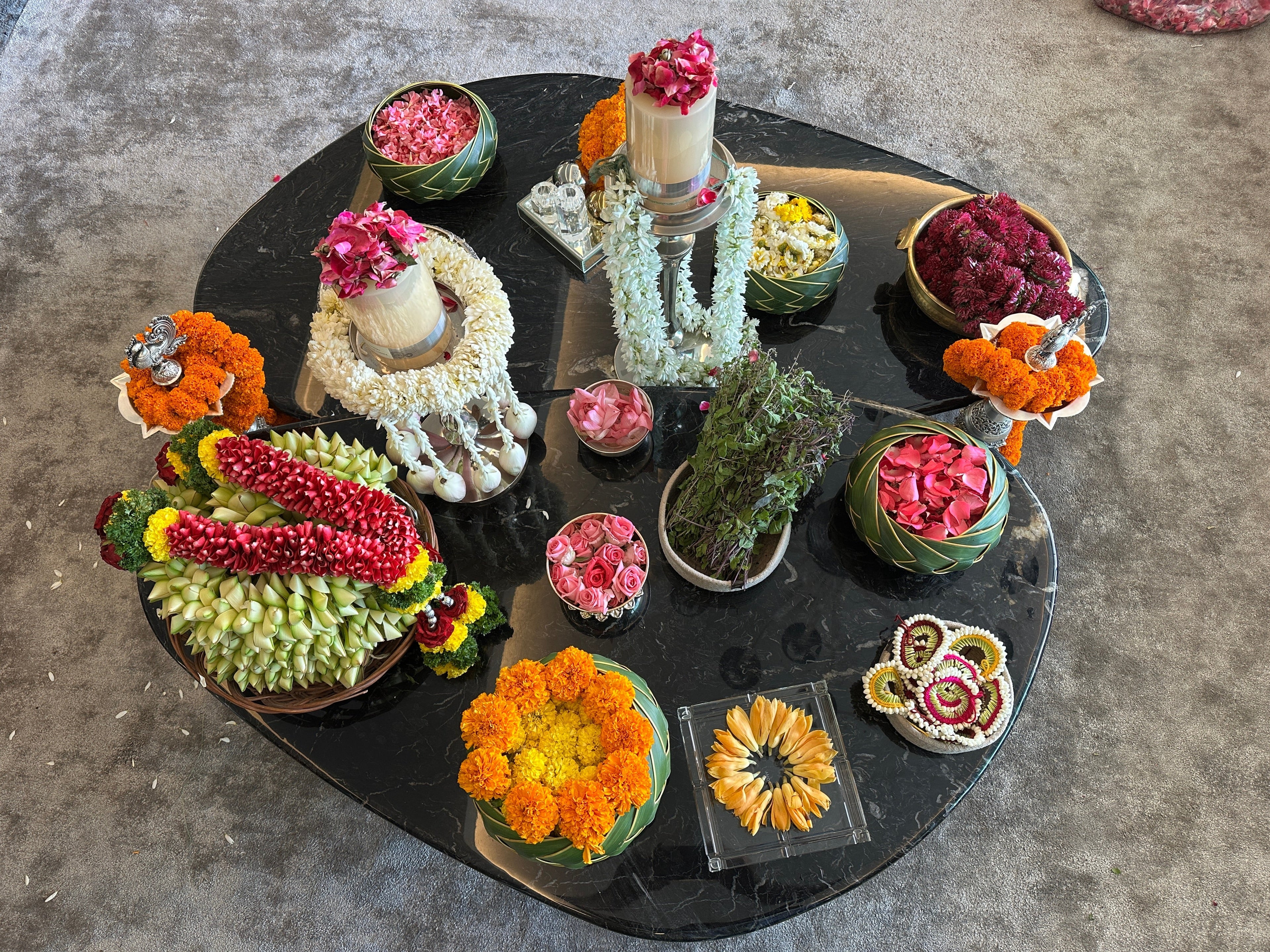
When I placed that perfect rose arrangement on my altar last year, I had no idea about the journey it had taken to reach me. The delicate petals that seemed so pure had been sprayed with chemicals I couldn't pronounce, flown thousands of kilometers burning fossil fuels, and handled by workers facing harsh conditions—all before being sold as "fresh" despite being cut nearly a week earlier.
The global cut flower industry harbors uncomfortable truths that contradict the very essence of what flowers represent in our spiritual practices: purity, natural beauty, and divine connection. This eye-opening exploration reveals the hidden costs behind conventional flower sourcing and why the movement toward local, farm-fresh alternatives represents not just a trend, but a necessary return to more authentic and ethical practices.
Key Takeaways
-
Conventional cut flowers often travel 5,000+ kilometers before reaching your home, generating substantial carbon emissions
-
Commercial flower farms typically use 5-8 times more pesticides than food crops, with limited oversight
-
Workers on large-scale flower farms frequently face hazardous conditions and exposure to toxic chemicals
-
Local, farm-fresh flowers retain significantly more fragrance and beneficial compounds than imported alternatives
-
Supporting local flower farmers helps preserve traditional knowledge while creating sustainable livelihoods
The Hidden Journey of Conventional Cut Flowers
From Foreign Fields to Your Hands: The Global Supply Chain
That seemingly fresh rose on your altar likely began its journey in the vast flower farms of countries like Colombia, Kenya, or Ecuador, where ideal growing conditions and low labor costs have created massive flower production hubs. But this global system comes with staggering environmental costs:
-
A single imported bouquet generates approximately 18kg of carbon dioxide—equivalent to driving nearly 100 kilometers
-
Refrigerated air transport burns 33% more fuel than standard cargo flights
-
Cut flowers typically spend 5-7 days in transit before reaching local markets
-
Energy-intensive cold storage is required at multiple points to prevent premature wilting
During this extended journey, flowers lose much of their fragrance, vitality, and beneficial compounds—all while accumulating a substantial carbon footprint that contradicts the natural purity they symbolize.
The Chemical Reality: What's Really on Your Flowers
The picture-perfect blooms in conventional markets hide a concerning chemical reality. Unlike food crops, flowers face minimal regulatory oversight regarding pesticide use because they're not consumed—at least not intentionally. This regulatory gap creates troubling patterns:
-
Commercial rose farms may apply up to 127 different chemical compounds monthly
-
Flowers regularly test positive for pesticide residues classified as moderately to highly toxic
-
Fungicides and preservatives are often applied post-harvest to extend shelf life
-
Many chemicals used internationally are restricted or banned for food production
These chemicals don't just affect the environment—they remain on the flowers you bring into your home and place before your deities. When you touch these blooms during rituals, these residues transfer to your hands and the sacred items they contact.
Wait, that's not quite right...
Let me be clear: not all flower farms use harmful chemicals. Many responsible growers—especially local producers—employ sustainable practices. But the volume demands and cosmetic perfectionism of the global market often drive conventional producers toward intensive chemical use.
Human Cost: Worker Conditions in Production Centers
Beyond environmental concerns, the global flower trade often involves troubling labor practices:
-
Flower farm workers frequently report health issues from chemical exposure, including respiratory problems, skin conditions, and reproductive health concerns
-
During peak seasons like Valentine's Day, workers may endure 12-16 hour shifts with limited breaks
-
Women, who comprise approximately 70% of the workforce, face additional challenges including harassment and gender-based discrimination
-
Wages in major producing regions often fall below living wage standards despite the industry's profitability
These conditions create a stark contradiction: flowers meant to express beauty and spiritual devotion being produced through systems that compromise human dignity and wellbeing.
The Local Alternative: Return to Traditional Wisdom
Traditional Flower Growing: Ancient Knowledge Preserved
Before globalization transformed flower sourcing, devotees relied on locally grown blooms with deep connections to regional spiritual practices. This approach wasn't merely practical—it aligned with scriptural guidance about appropriate offerings:
Ancient texts specifically mention the importance of freshness and purity in floral offerings. The Padma Purana instructs devotees to use flowers "freshly picked at dawn," while other texts emphasize flowers grown in clean soil without animal waste—early recognition of growing conditions' importance.
Traditional knowledge included:
-
Specific growing techniques for ritual-appropriate varieties
-
Harvesting methods that maximized a flower's spiritual potency
-
Natural pest control using companion planting and neem derivatives
-
Seasonal awareness that aligned offerings with cosmic cycles
When you choose locally grown flowers, you're not just making an environmental choice—you're reconnecting with traditional wisdom that recognized the inseparable relationship between growing practices and spiritual efficacy.
For more insights into how freshness affects spiritual practices, see our detailed guide on Pooja Flowers: Why Only Fresh Blooms Matter & What NOT to Offer.
Modern Local Growing: Innovation Meets Tradition
Today's local flower farmers blend traditional knowledge with sustainable innovations:
-
Natural Pest Management: Using beneficial insects and neem-based solutions rather than synthetic pesticides
-
Water Conservation: Implementing drip irrigation and rainwater harvesting to minimize water usage
-
Soil Health Focus: Building living soil ecosystems rather than relying on chemical fertilizers
-
Native Species Preservation: Maintaining biodiversity by cultivating indigenous varieties
-
Season-Appropriate Growing: Working with natural cycles rather than forcing off-season production
These approaches yield flowers that aren't just more environmentally friendly—they're genuinely more vibrant, fragrant, and aligned with the spiritual purposes they serve.
The Tangible Benefits of Going Local
Superior Sensory Experience: Fragrance, Vitality, and Energy
The most immediately noticeable difference in local flowers is their sensory impact:
-
Intense Fragrance: Local blooms retain 65-80% more aromatic compounds than imported alternatives
-
Vibrant Colors: Truly fresh flowers display color depth impossible in blooms aged during transport
-
Texture Difference: Recently harvested petals maintain their natural firmness and resilience
-
Energetic Quality: Flowers harvested hours rather than days ago retain their vital life force or prana
These qualities aren't merely aesthetic—they directly impact the efficacy of ritual use. The fragrance of fresh flowers creates an atmosphere conducive to meditation and prayer, while their vibrant appearance enhances visual focus during worship.
The spiritual significance of truly fresh flowers is explored in-depth in our comprehensive guide Fresh Flowers Decoded: The Complete Ecosystem from Farm to Spiritual Significance.
Environmental Benefits: Beyond Carbon Reduction
Choosing local flowers creates environmental benefits beyond reducing transport emissions:
-
Water Conservation: Local farms typically use 30-45% less water than large-scale operations
-
Reduced Chemical Load: Smaller-scale farms average 60-80% less pesticide application
-
Biodiversity Support: Local growers often maintain greater variety, supporting pollinators
-
Seasonal Alignment: Working with rather than against natural growing cycles reduces resource inputs
These benefits create a holistic environmental advantage that aligns with the principles of respect for nature inherent in many spiritual traditions.
Community Impact: Supporting Local Economies
Every purchase decision represents a vote for the kind of world you want to create. When you choose local flowers:
-
You direct approximately 60-70% more of your purchase price to the actual growers
-
Support businesses that typically provide better working conditions and fair wages
-
Help preserve traditional agricultural knowledge and techniques
-
Create economic opportunities in rural communities surrounding urban centers
-
Build relationships with the people actually growing your ritual offerings
This investment in community reflects the interconnectedness emphasized in spiritual teachings—recognizing that our choices affect not just ourselves but the broader social ecosystem.
Making the Transition to Local Flowers
Where to Find Truly Local Blooms in Pune
Finding genuinely local, farm-fresh flowers in Pune requires looking beyond conventional markets:
-
Farm-Direct Programs: Several farms within 50km of Pune now offer direct purchasing options
-
Farmer's Markets: Weekly markets featuring local growers are emerging in several neighborhoods
-
Subscription Services: Farm-to-door delivery services specifically for pooja flowers
-
Temple Partnerships: Some temples have established relationships with local growers
For a comprehensive guide to finding fresh flowers in Pune, see our detailed resource on Where to Find the Freshest Flowers in Pune: Complete Guide.
Subscription Model: The Convenient Path to Local Sourcing
For many devotees, flower subscriptions represent the ideal balance between convenience and conscious sourcing:
-
Regular deliveries of locally grown, genuinely fresh flowers
-
Direct farm relationships without requiring personal market visits
-
Seasonal variety that aligns with traditional practices
-
Reduced packaging waste through reusable or compostable options
The subscription approach eliminates barriers that might otherwise make consistent local sourcing challenging for busy individuals. Learn more about this modern solution in our analysis of Why Smart Buyers Are Choosing Flower Subscriptions.
Asking the Right Questions: What to Look For
When seeking local flowers, consider asking these questions:
-
Where exactly are these flowers grown? (Look for specific farm locations, not vague regions)
-
When were they harvested? (Ideally within 24 hours of purchase)
-
What growing practices are employed? (Organic, natural, traditional, etc.)
-
Are seasonal varieties available? (An indicator of natural growing cycles)
-
Who grew these flowers? (Personal connection to the actual growers)
The answers reveal much about the true nature and journey of the flowers you'll be bringing into your sacred space.
Beyond Personal Choice: Advocating for Change
Supporting Initiatives for Sustainable Floriculture
Individual purchasing decisions matter, but broader initiatives can create systemic change:
-
Advocate for transparency in flower labeling regarding country of origin and harvest date
-
Support certification programs that verify sustainable growing practices
-
Encourage temples and religious institutions to prioritize local flower sourcing
-
Share information about the benefits of local flowers with your community
These collective actions help transform the broader market, making ethical flower choices more accessible to all devotees.
Creating Demand for Traditional Varieties
Many traditional flower varieties used in worship have declined in commercial availability due to their limited shelf life or shipping challenges. By specifically requesting these varieties from local growers, you help:
-
Preserve agricultural diversity and indigenous plant knowledge
-
Maintain the cultural heritage associated with specific ritual flowers
-
Create economic incentives for growing varieties uniquely suited to devotional purposes
-
Reduce reliance on imported substitutes that lack traditional significance
This approach represents not just ethical consumption but active participation in preserving living heritage.
Conclusion: Aligning Spiritual Practice with Conscious Choices
The flowers we offer in worship represent more than mere decorative elements—they embody our intentions, values, and connection to both divine and natural worlds. When these offerings are grown with respect for people and planet, their spiritual significance remains intact and uncompromised.
The movement toward local, farm-fresh flowers doesn't require sacrifice or inconvenience. Modern options like subscriptions and farm-direct programs make ethical sourcing accessible even for busy practitioners. These choices align our external actions with the internal values our spiritual practices seek to cultivate—creating harmony rather than contradiction.
By supporting local flower farmers, you're not just making an environmental choice—you're investing in a system that honors the true purpose and meaning of flowers in devotional practice. You're choosing flowers with integrity, whose journey from soil to altar reflects the same purity and intention you bring to your worship.
The future of flower sourcing isn't about technological advancement but rather thoughtful return to what flowers fundamentally are: living expressions of nature's beauty, best experienced close to their source and as close as possible to the moment they bloomed.
For insights into the hidden science and spiritual power of fresh flowers, explore our detailed examination of Beyond Beauty: The Hidden Science & Spiritual Power of Fresh Flowers in Everyday Life.

